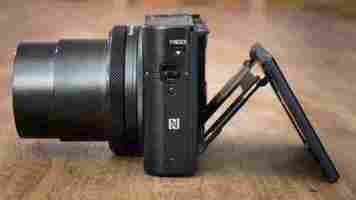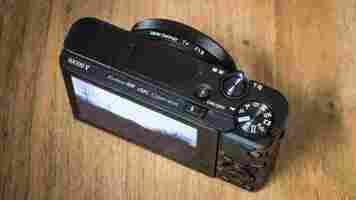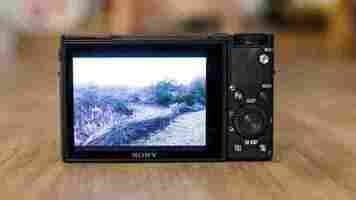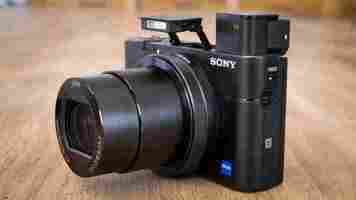Sony RX100 V review: The fastest shooter in the West
The Sony RX100 series is probably the most important development in camera design this decade. These cameras deliver something previously thought to be impossible: true SLR quality in a camera small and light enough to fit in a jeans pocket. It’s all thanks to the combination of a 1in sensor, which is around four times bigger than conventional compact cameras’ sensors, and an f/1.8 to f/2.8 lens that’s around four times brighter. That means sixteen times more light reaching the sensor, giving the equivalent of a f/4.9-7.6 lens on a full-frame camera. That’s slightly better than a consumer SLR and kit lens — a staggering achievement.
Various other cameras have followed a similar formula over the last couple of years, including the Canon G9 X and G7 X II , Panasonic TZ100 and Nikon DL24-85. They all offer a more generous zoom range than the RX100 series’ relatively modest 24-70mm (2.9x). Sony has hit back with a big dollop of performance. The RX100 V is incredibly fast on paper, with 24fps burst shooting that has continuous autofocus, 4K video recording and a superb collection of slow-motion video modes. It can capture 17-megapixel photos at the same time as it records 1080p videos. It’s also one of the few examples of this type of camera to include a viewfinder, which is all the more remarkable when you consider how small and light it is. The viewfinder retracts inwards and downwards into the camera when not in use.
READ NEXT: The best cameras of 2016 – these are our favourite snappers
One thing the Sony RX 100 V doesn’t have is lots of buttons for easy access to manual settings. There simply isn’t room for them and the ones that are there are all small and fiddly. There are labelled buttons for drive mode, exposure compensation and flash, plus one customisable button. In fact, all four can be customised from a long list of possible controls.
Even so, those who like to adjust settings will spend a fair amount of time in the Function and main menus. A touchscreen would have really helped here. On the upside, the rear wheel and lens ring provide quick access to shutter speed and aperture settings. The lens ring can be reassigned to other duties if you prefer.
Wi-Fi is included, and with the help of NFC and an on-screen QR code, I was able to quickly set up with the Android app on my phone and communicate with the camera. There isn’t much control, though. The app can take photos or videos and adjust exposure compensation but sadly it’s not possible to move the autofocus point — a useful feature when taking group portraits remotely.

Sony RX100 V review: Performance
Performance is the RX100 V’s big selling point, and it has undergone significant improvements over the Sony RX100 IV . Continuous shooting is up from 16fps to 24fps and the significantly larger buffer means it keeps going for longer. It managed 23.1fps in my tests and kept up this pace for 170 JPEGs or 72 RAW frames before slowing. This is the fastest performance I’ve ever seen from ANY camera, but that’s just the start.
Even more remarkably, the 24fps burst mode comes with continuous autofocus, thanks to the 315 phase-detect autofocus points built into the main sensor. I expected the results of this to be more hit than miss, but analysis of 300 burst frames with a moving camera position produced 165 frames that were sharp.
Technically, it’s astounding, but I’m not sure this is the ideal camera to exploit such an amazing turn of speed. The 24-70mm lens is too short for most sports and wildlife photography. It could be useful for macro shots of insects, or for martial arts where you can get reasonably close, but most fast-moving subjects are likely to be too far away to photograph successfully.

It’s good to see this fast burst mode reflected in everyday use. Autofocus took between 100 and 500ms to lock onto subjects, and shot-to-shot times in the Single drive mode averaged 300ms. The only go-slow was when inserting a blank SD card, where the camera had a bit of a moan and took around nine seconds to prepare the card. Sony cameras have been doing this for a few years and it’s not getting any less annoying. Another grievance is that photos, MP4 videos, AVCHD video and XAVC S videos are all stored in different folders, which makes copying files off cards quite a palaver.
The performance boost means that battery life has fallen from 280 to 220 shots. Combined with its ability to fire off masses of photos, that meant I had to charge this camera more regularly than I do for most other cameras I've have in for review recently. Charging is in-camera using the same cable type used by Android devices. That means it’s easy to locate a charger, but not possible to charge one battery while using another. Additional batteries cost £35, and an external charger is available for £44.

Sony RX100 V review: Video mode
4K video and 1080p slow motion were two stand-out features of the Sony RX100 IV , and they’re just as good this time around. The larger buffer means slow motion videos can be twice as long, with just over four seconds of capture producing 43 seconds of video when 250fps capture is played back at 25fps. The camera can also capture at 500fps or 1,000fps but quality deteriorates slightly. It’s useful for science experiments but the superb quality 250fps mode is slow enough for arty video montages.
Its 4K videos look outstanding, with crystal-clear details and smooth colour gradients in brightly lit conditions. Picture quality held together well in low light, too. Video autofocus was decisive and reliable, with the 315 autofocus points helping to keep subjects sharp. However, the camera is severely hampered by the lack of a touchscreen. The autofocus point can be moved while you're shooting, but repeated button presses are cumbersome and tend to shake the camera. Subject tracking is available for 1080p video capture but not 4K.
